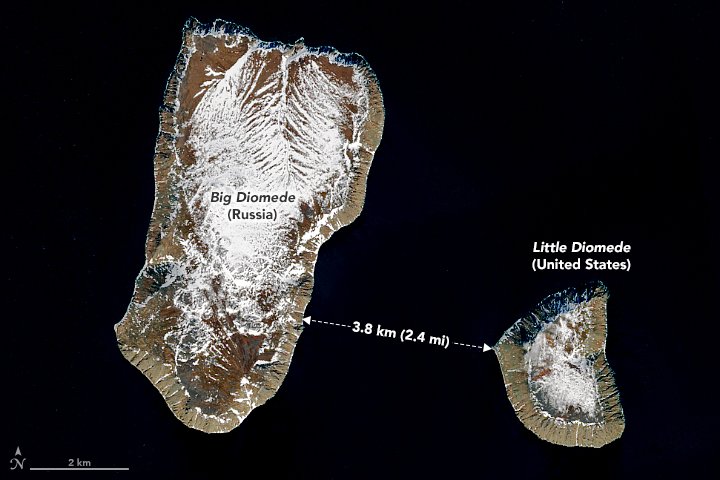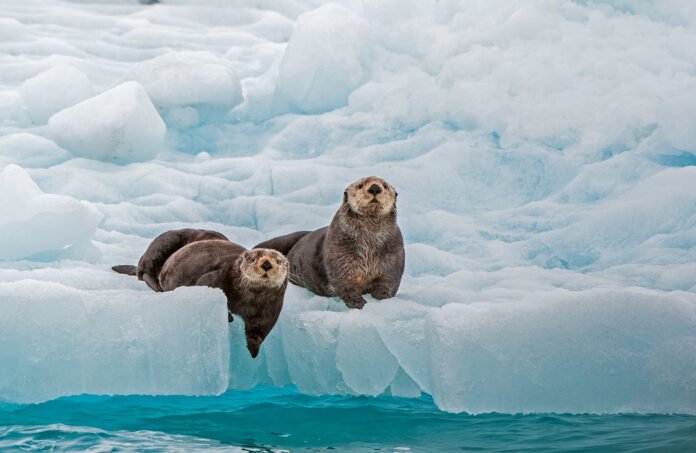On January 3, 1959, Alaska became the 49th state to merge with the United States of America.
“The Last Frontier,” “The Land of the Midnight Sun,” and “Seward’s Icebox” are some of the region’s unofficial nicknames. It is the 48th sizably populous state, with a population of 710,000 people.
Alaska is connected with the Canadian provinces of Yukon and British Columbia, instead of any US state.
It is the biggest state in the United States, covering 663,268 square miles (1,717,856 square kilometers) of territory and water.
For the time being, enough cold, hard facts – we’re here to discover more about this monolithic region and the secrets it hides all the way up north!
Alaska has Resided for about 15,000 years.
The initial human crossed the Bering Strait around 15,000 years ago, from what is today Russia’s most easterly location to Alaska’s most westerly point.
Due to lower international sea levels, the Bering Strait was really a land bridge when people undertook this great journey.
Many of these people toured the south and ultimately settled in both North and South America.
Some, on the other hand, settled in Alaska long before the coming of Europeans.
In Aleut, Alaska means “Great Land.”
The Aleut people are indigenous to the Aleutian Islands, and it was their name for Alaska that we still use today. Local Alaskans make up more than a quarter of Alaska’s population.
The Inupiat, Yuit, Athabascans, Tlingit, Haida, and Aleut are the six basic communities of Alaskan Natives, each with its own languages and dialects.
They are not approximately connected to migrants who moved forward south to settle in South America, as they came in later waves, despite being part of the same migration structures over the Bering Strait.
Alaska was a part of the Russian Empire at one time.
According to some investigators, the Russian Empire began populating Alaska in the 17th century. Numerous boats owned by to Russian explorer Semyon Dezhnyov are said to have arrived in Alaska and created a camp.
Whether or not that is valid, Russia did occupy Alaska later, with the first solid settlement being organized in 1784.
While the Russian Empire’s colonization of Alaska failed miserably, the United States had its own policies.
On October 18, 1867, the United States paid $7.2 million to the Russian Empire for Alaska.
40% of Alaskans reside in a single locality.
The Rail belt is a system of highways and railways that stretches from Alaska’s southern seasides to the state’s heart.
More than two-thirds of the population of Alaska has lived in communities, villages, and cities on this stretch of land.
The city of Anchorage, Alaska’s biggest metropolis, is found on the southern extremity of the Rail belt.
With a whole area of 1,944 square miles (5,035 km2), this city is home to nearly 291,000 people, accounting for nearly 40% of Alaska’s population!
Alaskan Citizens are paid to live there.
Because Alaska has numerous natural reserves, the Alaska Permanent Fund was established in 1976 to Jan with the state’s petroleum interest surpluses.
This state fund is formulated to develop by investing in other areas, and a dividend is spent on qualified Alaskans each year.
To be able, you must have stayed in the state for at least 12 months with no pauses in residence or have distinctive legal convictions.
The dividend is fixed yearly, but it was $1,606 in 2019.
Russia is so Near to Alaska that it may be Reached by Swimming.

The Bering Strait stretch that separates Russia and Alaska is much narrower than you may think.
It’s only 51 miles (82 kilometers) broad at its leanest point. However, two islands held by Russia and Alaska are found within the Bering Strait.
The Russian island is named Big Diomede, and the Alaskan is named Little Diomede.
These islands are barely 2.5 miles apart, near enough for you to see someone on the other side!
In fact, a long-distance swimmer named Lynne Cox swam across the English Channel and into the Soviet Union in 1987!
Alaska’s official sport is dog sledding.
The dog sled is one of the most famous modes of transportation in Alaska, having been utilized for centuries.
The technique of pulling a sled across the snow with a team of one or more dogs while the musher sits at the back of the sled is recognized as dog sledding or mushing.
Nowadays, however, sled dog racing is more of a game than a mode of transportation.
Every year, sled dog racers from all over the world descend on Anchorage to fight in the Iditarod Sled Dog Race, which spans 1,150 miles (1,850 kilometers).
Alaska Contains some of the Tallest Mountains in the United States.
The mountains in Alaska are among the most attractive in the world, and they don’t disappoint!
In fact, the five tallest peaks in the United States are found in this big northern state.
Denali Mountain (previously Mount McKinley) has the tallest peak at 20,310 feet (6,194 meters).
Denali literally summarizes “the tall one” in Koyukuk, the local indigenous language.
In Alaska, there are over 130 active volcanoes.
The Aleutian Islands are an archipelago off the coast of Alaska.
This area is placed in one of the world’s most functional earthquake zones, which spans a big portion of the Pacific Ocean.
As a result, the Aleutian Islands are home to not only frequent seismic activity but also several functional volcanoes.
Unimak Island, the biggest of the Aleutian Islands, is home to Mount Shishaldin, especially a grand volcano.
This volcano, greater than Japan’s Mount Fuji, is the most perfectly round volcanic cone on the earth.
A Cat once Served as Mayor of a Municipality in Alaska.
Stubbs the cat was the honorary mayor of Talkeetna for a solid 20 years, however, he wasn’t the official mayor.
Stubbs the ginger cat was born on April 12, 1997, and served as mayor from 1998 until 2017.
Stubbs’ owners discovered him and a few other cats in a box, and he was later elected mayor after a write-in march by the town’s residents, despite the fact that the town was so small that it didn’t have its own mayor.






![How To Get A Ring Off a Swollen Finger [Update] How To Get A Ring Off a Swollen Finger](https://www.shopplax.com/wp-content/uploads/2024/01/How-to-get-a-ring-off-218x150.webp)


